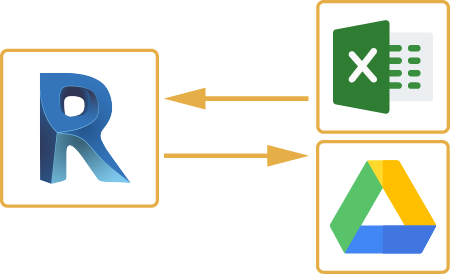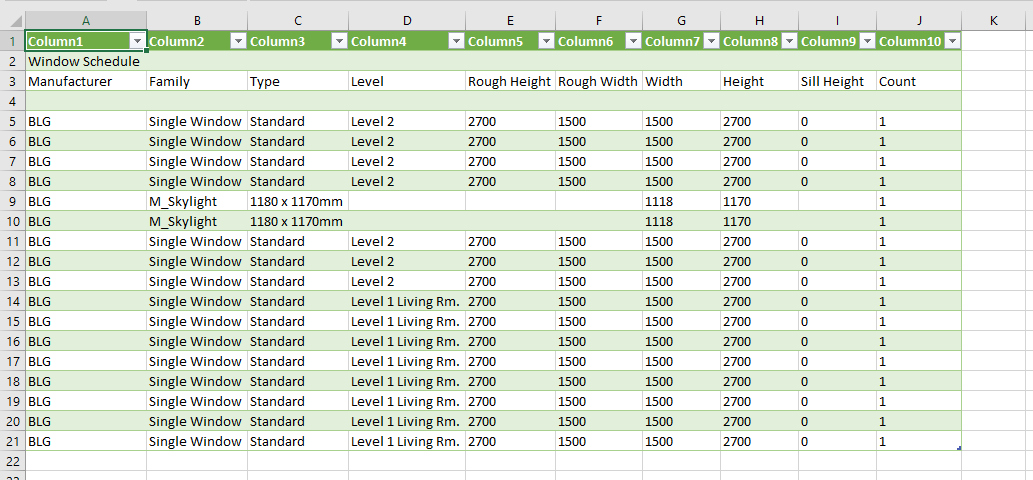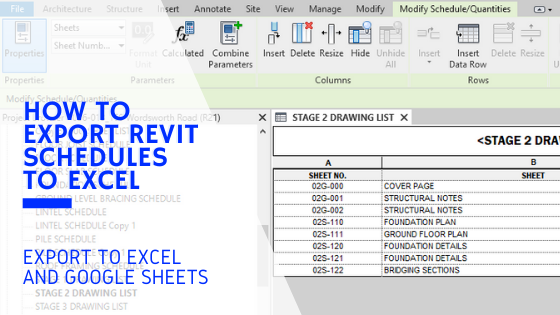Excel-to-Revit: A Game-Changing Workflow for Architectural Style - Introducing the Secrets
Are you tired of spending hours on building style? Look no additional! Introducing excel-to-revit, the game-changing process that will transform your layout process. With excel-to-revit integration, you can simplify your building layout, unlock efficiency, and maximize collaboration within your team. In this article, we will certainly introduce the secrets of this effective tool, showing you just how it can transform your style tasks. Prepare to take your building layout to the following level with excel-to-revit!
The Power of Excel-to-Revit Assimilation

Imagine the comfort of having the ability to modify and upgrade task data in Excel, and immediately see those changes reflected in your Revit version. Say goodbye to hands-on data entrance or tiresome updates. With Excel-to-Revit integration, you can save time and lower mistakes by leveraging the power of Excel's solutions and functions to automatically produce exact information in Revit.
Not only does this combination boost performance, yet it also enhances partnership among team members. You can easily share Excel files with associates, that can then import the data right into their Revit versions. This promotes a seamless exchange of information and makes sure that every person is working with one of the most up-to-date data.

Enhancing Architectural Layout With Excel-To-Revit
Simplifying building layout is simplified with making use of Excel-to-Revit (import excel into revit). With this effective assimilation, you can enhance your process and conserve important time throughout the style procedure. By leveraging the abilities of Excel and Revit, you can flawlessly transfer data between both systems, eliminating the need for manual information access and minimizing the risk of errors
Excel-to-Revit enables you to import and export data easily, enabling you to easily upgrade and change your building designs. You can create timetables, determine amounts, and create records in Excel, and after that move that information directly right into your Revit design. This integration guarantees that your layout information is constantly current and synchronized, removing the demand for hand-operated updates and minimizing the possibilities of inconsistencies.
By utilizing Excel-to-Revit, you can likewise make use of the effective computational abilities of Excel. You can do complex calculations, examine data, and automate repetitive jobs, all within Excel. Then, with just a few clicks, you can import the results back into Revit, allowing you to make educated style decisions and enhance your building styles.
Opening Effectiveness: Exploring the Excel-to-Revit Workflow
Optimize your productivity by effortlessly incorporating Excel and Revit for a much more efficient process. With the Excel-to-Revit operations, you can unlock an entire brand-new degree of efficiency in your architectural style process. By using the power of Excel's information administration capacities and incorporating it with the adaptability and accuracy of Revit, you can streamline your design process and conserve valuable time.
One of the essential advantages of this integration is the ability to import and export data between Excel and Revit. This indicates that you can conveniently transfer task information, such as room routines or product amounts, from one software program to the other, getting rid of the demand for hands-on information entry and lowering the possibilities of mistakes. You can additionally produce custom solutions and computations in Excel to automate repeated tasks and perform intricate computations, which can after that be flawlessly integrated into your Revit models.
In Addition, the Excel-to-Revit process permits better sychronisation and collaboration in page between employee. With Excel functioning as a central information center, numerous team participants can deal with various elements of the job concurrently, upgrading and sharing information in real-time. This not just boosts interaction however additionally makes sure that everybody is dealing with the most current information, getting rid of the danger of disparities.
Optimizing Collaboration: Excel-to-Revit for Architectural Teams
By perfectly integrating Excel and Revit, building groups can substantially improve collaboration and attain a lot more efficient style outcomes. When utilizing this powerful workflow, you can quickly transfer information in between Excel spreadsheets and Revit designs, enhancing the style procedure and boosting interaction amongst staff member. With Excel-to-Revit integration, you can easily import task information, such as area timetables, product amounts, and task criteria, straight right into Revit, removing the demand for hands-on data entry and minimizing the opportunities of mistakes. This seamless connection enables real-time updates, making sure that everyone is collaborating with one of the most current info and preventing disparities between different papers.
Additionally, by leveraging Excel's powerful computation abilities, you can perform complex calculations and analysis on your style information, giving useful understandings and driving notified decision-making. This combination also allows you to export information from Revit to Excel, allowing you to create extensive records, graphes, and charts for presentations and analysis. This collaborative workflow promotes reliable interaction and control amongst team members, as Excel works as a main center for data administration and sharing.
Total, by welcoming the Excel-to-Revit workflow, architectural groups can accomplish higher levels of partnership, effectiveness, and precision in their design procedure. revit tools. This combination empowers groups to collaborate seamlessly, making sure that everyone gets on the same page and adding to the success of the job
Revealing the Secrets of Excel-to-Revit Combination

Among the keys of Excel-to-Revit assimilation is the ability to utilize the power of formulas and computations in Excel to drive criteria and create complex geometries in Revit. You can link Excel spread sheets to Revit family members, enabling you to input information directly right into the spreadsheet and have it automatically upgrade in the Revit model. This enhances the style process and makes sure accuracy and uniformity across the project.
One more key is the capability to create custom-made timetables and reports in Excel, making use of information removed from Revit. This allows you to imagine and evaluate project info in a method that is not feasible within Revit alone. You can quickly produce quantity take-offs, cost price quotes, and job timelines, giving valuable insights for decision-making and task management.
Furthermore, Excel-to-Revit combination enables effective cooperation among employee. Numerous individuals can function on the same Excel spread sheet all at once, making it less complicated to collaborate and track modifications. You can additionally make use of Excel's commenting feature to give feedback or interact layout revisions.
Final Thought
By integrating the power of Excel and Revit, designers can currently work extra efficiently, conserve time, and produce better layouts. Start incorporating excel-to-revit combination into your building design procedure today and change the method you work.
With simply a couple of clicks, you can import the results back into Revit, allowing you to make educated design choices and optimize your architectural designs.
By making use of the power of Excel's data administration capabilities and incorporating it with the versatility and accuracy of Discover More Here Revit, you can simplify your design procedure and save beneficial time.
By seamlessly integrating Excel and Revit, building groups can greatly boost collaboration and attain extra reliable design outcomes. When using this powerful workflow, you can quickly transfer data between Excel spread sheets and Revit models, improving the style process and enhancing communication among team members.Moreover, by leveraging Excel's effective calculation capabilities, you can execute intricate calculations and analysis on your design data, driving and providing important understandings notified decision-making.